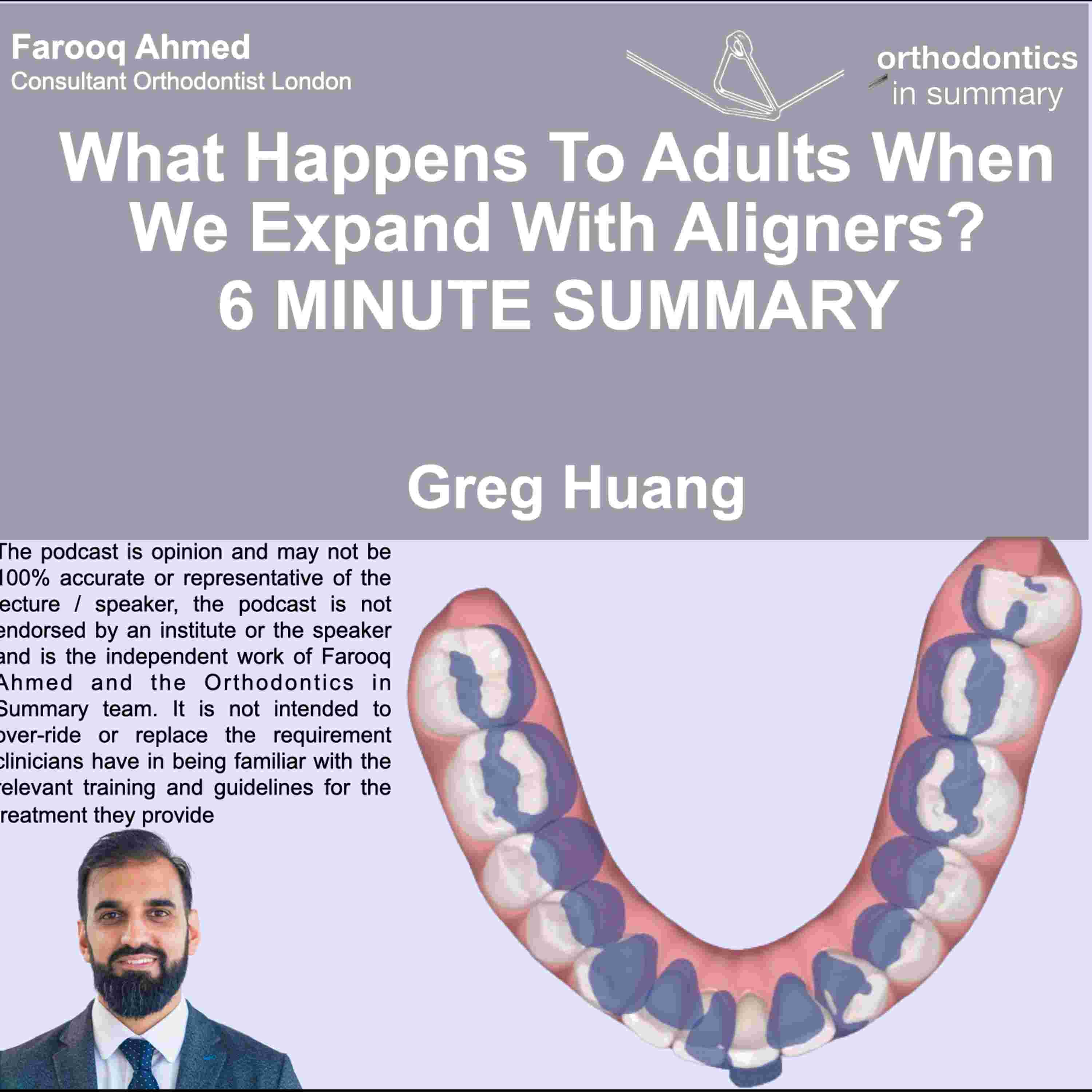

Join me for a podcast summary looking at the effects of aligners when expansion occurs. In this podcast we will explore if bone loss occurs with expansion and why bone loss doesn’t necessarily cause recession. The podcast is based on the lecture and research by Greg Huang presented at this year’s AAO, and includes some more recent research on the topic
PICO
Population adults, 22 maxillary arches, 20 mandibular arches
Intervention – expansion with aligners, average 3.7mm
Control – minimal expansion, average 0.6mm
Outcome – bone height and width from CBCT
What was the bone loss?
Maxilla
· Minimal bone loss
· Minimal bone height and width change
Mandibular
· Significant bone loss
· 1.5mm height mandibular centrals
· 1.4mm height premolars
What movement took place of the incisors?
Maxilla
· Little change in bucco-lingual inclination
Mandibular
· Labial and buccal tipping increased
What were the overall changes?
Dental changes
· 3-4mm of expansion
· Mainly at premolars
· Mainly buccal tipping, not bodily movement
· Lower incisors procline
Similar bone loss with aligners expansion from other studies, Zhang 2023 , Allahham 2023
Should CBCT’s debate within the literature regarding voxel size of a CBCT and false negatives. Accuracy of alveolar height CBCT 2019 Yuan Li BA systematic review showed
· CBCT Vs skulls/patients
· Bone height 0.03mm
· Bone width 0.11mm
My thoughts: no difference in cbct and gold standard, however the measurements were all of large structures, not bone height or thickness of less than the voxel size
Predict bone loss
· Upper arch no predictors as limited changes
· Lower arch, same as for fixed appliances, but the quantity was missing
o Proclination
o Expansion
o Buccal expansion and tipping
Systematic review of orthodontics 48 articles de Llano-Pérula 2023
· Proclination
· Less keratinised tissue
· Thin biotype
· Prior recession
· Crossbite
· Previous recession
· Age
Does bone loss = gingival recession?
· Not generally found from Greg’s study
· When significant bone loss of 3mm, far less than 3mm gingival recession
Significant retraction of upper incisors and intrusion Kim 2024. Loss of Palatal bone however in retention palatal bone recovered
Hypothesis
· If PDL and periosteum are maintained epithelium is maintained
· If the root moves back into the bone, the bone recovers – as PDL and periosteum osteogenic, and tension generated between PDL and periosteum
· PDL-periosteum hypothesis – proposed by Greg Huang
What I liked about Greg’s lecture was that he started with declaring his conflict of interest as an academic, both the royalties he receives for his books as well as research funding, which was great to hear and a trend I hope continues. Acknowledged the hard work of the research lead, his trainee and the time-consuming process of orientating CBCT slices of 1000s of images